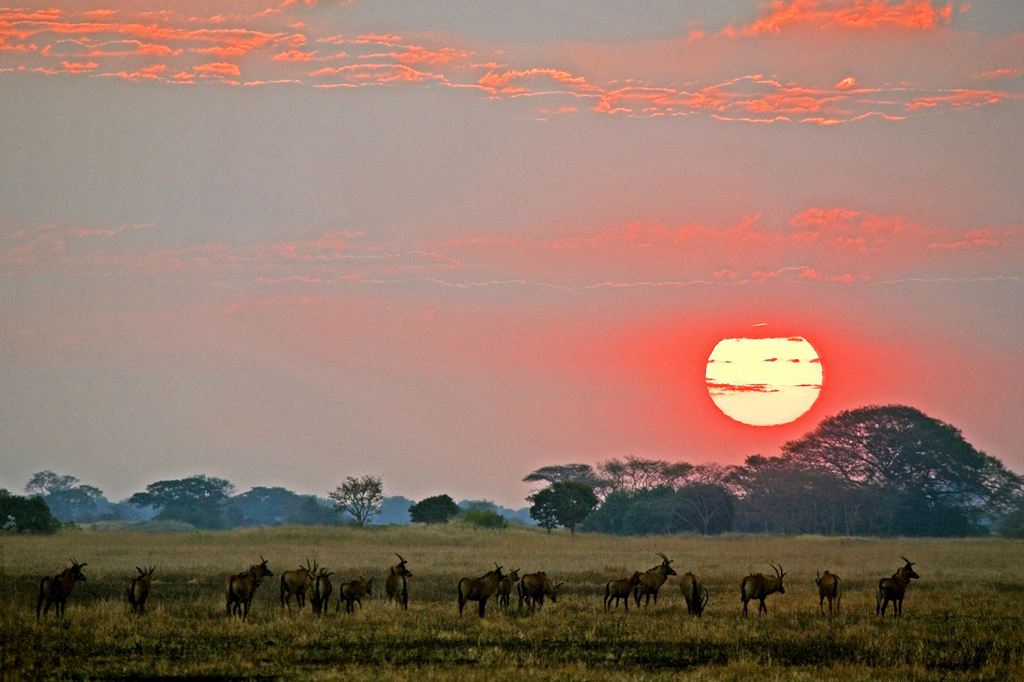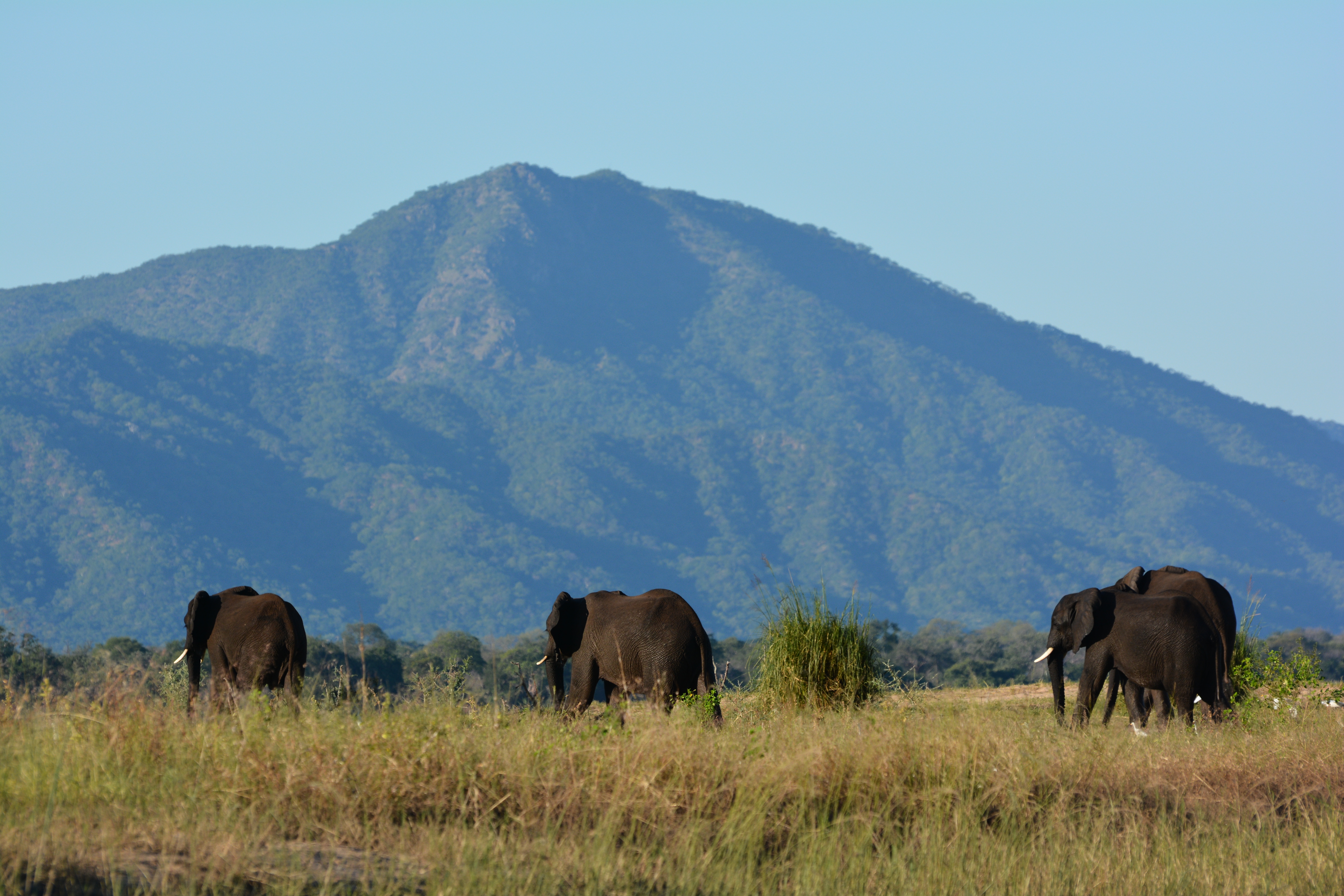Zambia
Zambia
A land competing with the best when it comes to wild and action packed safaris, Zambia offers a world of exploration and adventure.
While sharing the mighty Zambezi River and Victoria Falls with Zimbabwe, Zambia also has some truly wild and spectacular destinations of its own. With some magical national parks offering great wildlife experiences, Zambia has developed a name for its excellent guides, and exciting safari activities.
Accessed by air via either South Africa or Kenya, or by road from Botswana or Zimbabwe, Zambia offers full safari itineraries, or can be a great combination with other East or Southern African countries.
In general, due to the remoteness of the parks in Zambia, fly-in safaris are popular, although mobile road safaris are available. A major highlight of a Zambian safari is the isolation of many of the luxurious camps.
Zambia Accommodation
Kafue National Park
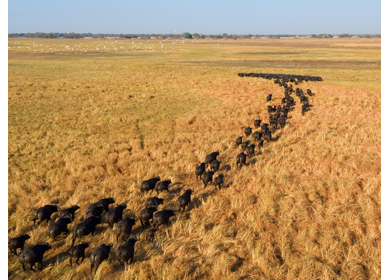
At 22 500 square kilometres, Kafue National Park is Zambia's biggest, and large tracts of this remain relatively unexplored.
The park is easily accessible, with daily flights carrying tourists in to various airstrips. However, for the size of the park, the visitor numbers are still low enough to consider the area truly wild.
Kafue has a phenomenal diversity of wildlife, and any visit here will amaze even the experienced safari-goer.
More Details
Kasanka National Park
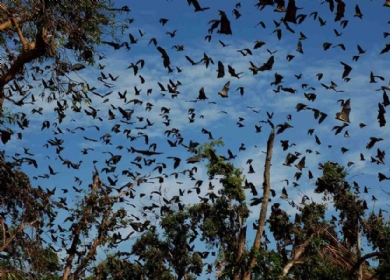
Situated on the south-western edge of Lake Bangweulu, and with a surface area of 450 square kilometres, Kasanka National Park is one of Zambia’s smallest national parks. Run by the Kasanka Trust charity in partnership with the local community – this park is the only privately managed park in Zambia.
Brimming with rivers, lakes, beautiful miombo woodlands, swamp forests, wetlands, dambos, lagoons and meadows, this picturesque park is able to support a unique and wide variety of fauna and flora. One rare species commonly found here is the sitatunga antelope, but the park’s biggest wildlife attraction is the annual fruit-bat migration.
Every year, approximately 10 million fruit bats make their way from the Democratic Republic of Congo to Kasanka National Park, where they take up residence in a small forest.
This is the largest mammal migration on earth, and seeing the fruit bats cover the sky at sundown is a unique Zambian experience.
More Details
Livingstone
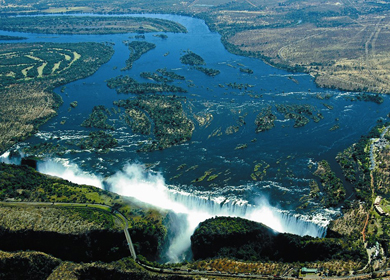
"Mosi Oa Tunya," or "The Smoke That Thunders," Victoria Falls are as magnificent on the 10th visit as they are on the 1st, and their thundering roar makes everything else seem strangely quiet once you leave them behind.
As the mighty Zambezi flows over a chasm of 1 mile wide, and 110 metres high, to violently crash on the rocks below, the resultant spray is sent tens of metres up into the air, before it lands back down in a continuous rainfall. The water then rushes through an opening of only 50 metres, as the Zambezi races further along, over churning rapids and through the deep Batoka Gorge.
While the Falls are the major drawcard, there is a thriving tourist industry developed around them, with adventure activities of all forms being available.
Tourism has been evident here ever since David Livingstone was the first European guided by the local tribes to this remarkable natural wonder.
More Details
Lower Zambezi National Park
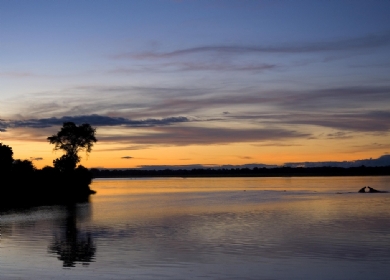
As the name explains, Lower Zambezi National Park is set along the banks of the mighty Zambezi River, which forms the border between Zambia and Zimbabwe.
On the other side of the river is Mana Pools National Park, which helps to create a large conservation zone in the Zambezi River valley.
Largely undeveloped, Lower Zambezi provides travellers with an action filled Zambian safari, with walking safaris, canoeing, boat cruises and fishing excursions all being available.
More Details
Lusaka
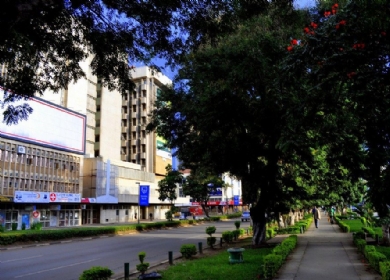
Nestled in the heart of southern Africa, Lusaka, the vibrant capital of Zambia, beckons travelers with its unique blend of urban energy and natural beauty. Towering jacaranda trees line the bustling streets, casting a purple hue in the warm African sun. Markets brim with colorful textiles, handcrafted jewelry, and exotic spices, enticing visitors to explore local craftsmanship. The city's rich cultural tapestry unfolds through its museums, showcasing ancient artifacts and contemporary art that narrate Zambia's history. At dusk, the skyline glows with the silhouette of modern skyscrapers against a backdrop of fiery sunsets, offering a serene contrast to the day's lively activities. Lusaka welcomes adventurers seeking to discover the pulse of Africa with its warm hospitality and diverse experiences waiting around every corner.
More Details
North Luangwa National Park
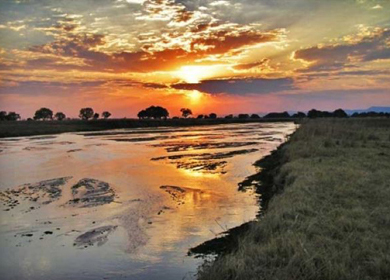
This remote tract of land, covering 4636 square kilometres, offers one of the finest wilderness experiences in Zambia, if not Africa itself. It is not open to the public and there are no permanent lodges there. Access is with one of the few safari operators granted permission to conduct walking safaris.
The beauty of visiting this Park is the truly remarkable opportunities to experience Africa as it was. It is wild and untouched and you are simply an unobtrusive witness to its natural beauty and drama. Although declared a wilderness area, the North Park, was not open to anyone other than Game Department rangers for more than thirty years. In 1984, Major John Harvey and his wife Lorna sought permission to conduct walking safaris in the area and for many years were the only operators in this remote wilderness.
Then in 1989, two scientists, Mark and Delia Owens, famous for their book ‘Cry of the Kalahari’, were granted permission to set up a research station in the Park. Through their influence and as a means of helping to curb poaching in the area, the authorities allowed entry to a few more safari operators who bring limited numbers into the Park for guided walking safaris and game drives. Their efforts in the North Luangwa are documented in their book ‘Survivors Song / The Eye of the Elephant’.
There are very few roads and you are unlikely to see anyone else for the duration of your trip. Like the South Park, it lies on the western bank of the Luangwa River bordered on the other side by the dramatic Muchinga Escarpment which rises over 1000 meters from the valley floor. Its hazy outline can clearly be seen from the Luangwa River.
There are a number of tributary rivers running through the Park and into the Luangwa which play an important ecological role in the area. The crystal-clear Mwaleshi River trickles down the escarpment in a series of small waterfalls. It recedes in the dry season, leaving many pools along the way, drawing the animals from the bush to its banks in search of water. No game drives are permitted in the Mwaleshi area, and access is by organized walking safaris only.
The vegetation ranges from mopane woodland to riverine forest, open grasslands and acacia thicket. Trees include the beautiful sausage tree, vegetable ivory palms, red mahogany and leadwood.
More Details
South Luangwa National Park
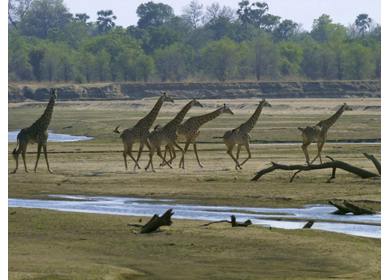
The concentration of wildlife along the Luangwa River is extraordinary, and has earned South Luangwa National Park the reputation of being one of the world's greatest wildlife sanctuaries.
The vegetation of the Luangwa valley changes dramatically between the wet and dry seasons, and this change makes the park a wonderful place to visit at anytime of year, although access to some areas becomes limited during the peak of the wet.
As one the founding locations for guided walking safaris, South Luangwa is still one of the best parks in Africa to experience exploring the bush on foot.
More Details

